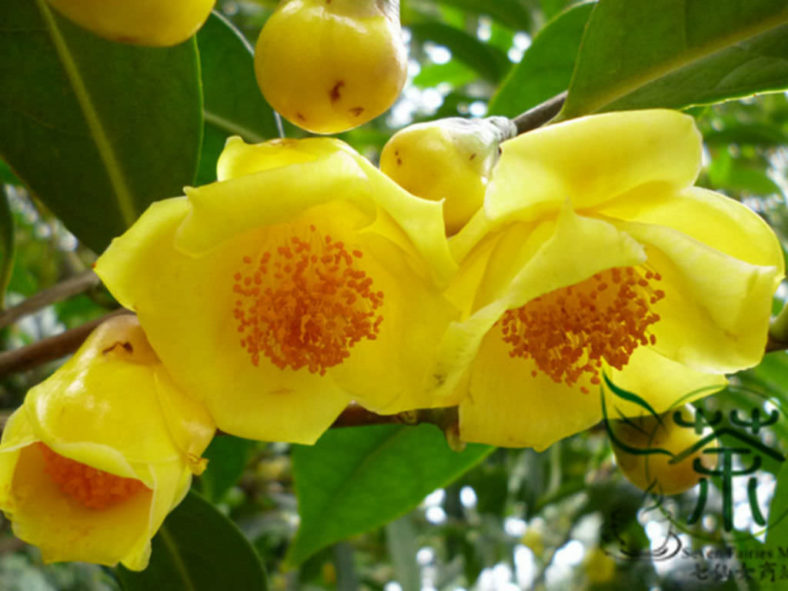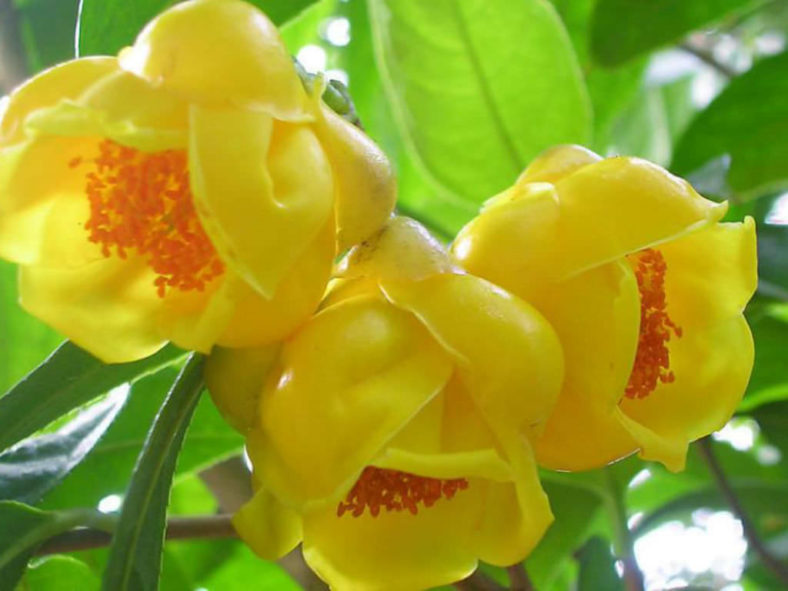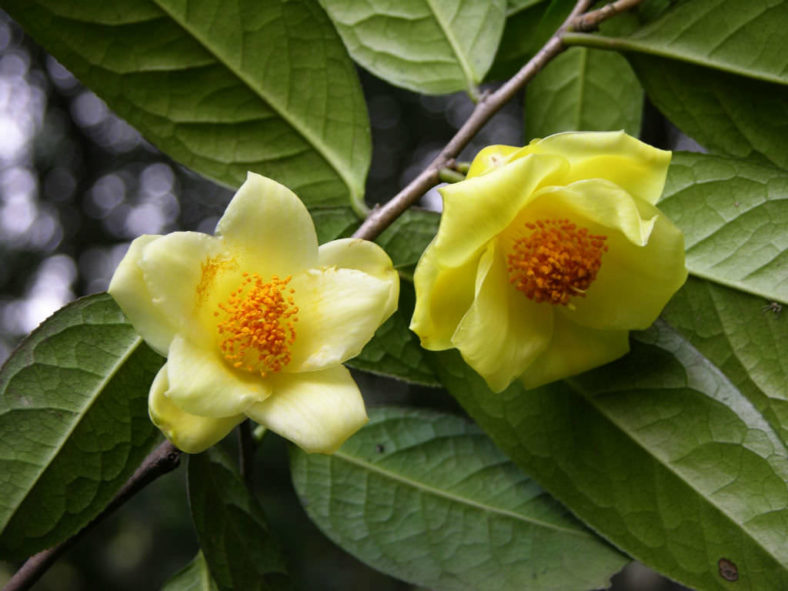Scientific Name
Camellia nitidissima C.W.Chi
Common Name(s)
Yellow Camellia. Golden Camellia
Synonym(s)
Camellia nitidissima var. nitidissima
Scientific Classification
Family: Theaceae
Subfamily: Cactoideae
Tribe: Cacteae
Genus: Camellia
Flower
Color: Yellow
Bloom Time: Mid-winter to mid-spring
Description
Camellia nitidissima is a shrub or small tree that grows up to 16.4 feet (5 m) tall. The leathery, elongated, oval leaves are glossy emerald green and have dimpled veins across the surface.
Flowering occurs from mid-winter to mid-spring. The cup-shaped waxy flowers are light to canary yellow, semi-double, and comprised of petals that curve inward like those of a rose. In the center of each flower is a dense cluster of golden-orange stamens. New foliage unfolds in both spring and fall.

How to Grow and Care
Choose a large rugged pot, terracotta, wood, or stone, and part fill with ericaceous compost, and then add your plant and backfill so that the level of the pot is level with the soil. Water well, preferably with water taken from a water butt. If you use tap water, which tends to be alkaline, allow it to stand for a morning first.
Repot every other year into fresh potting compost. In the intervening years, remove the top 2 inches (5 cm) of compost and add fresh compost. You can repot back into the same pot if you trim off up to one-third of the roots to make room for fresh potting compost or go up into a larger pot. This regime will keep your Camellia happy.
Camellias are fast-growing tap-rotted plants, and the new growth can snap off in windy positions, so staking is advisable for the first few years until the Camellia becomes bushy. They tolerate windy conditions, however, once established, and are often used as windbreaks in gardens where they thrive.
See more at How to Grow and Care for Camellia.
Origin
Camellia nitidissima is endemic to the Guangxi Zhuang Autonomous Region in southern China and northern Vietnam.
Links
- Back to genus Camellia
- Plantpedia: Browse flowering plants by Scientific Name, Common Name, Genus, Family, USDA Hardiness Zone, or Origin
Photo Gallery




